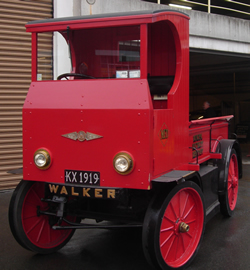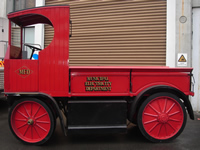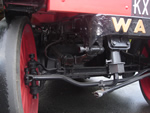
There are many debates in the 21st century about the viability of electric vehicles, but in the early part of the twentieth century they were a common sight on Christchurch streets.
One of the most prized examples of motoring heritage in New Zealand, the Walker half-ton electric truck is still in the ownership of the Christchurch Electricity Network Company, now called Orion NZ.
Custodian Neville Digby, a systems engineer at Orion NZ, says the vehicle, imported in 1918, is a treasure.
“It comes out for the Veteran Car Club of New Zealand’s annual display of historic pre-1919 vehicles held in Worcester Boulevard and occasionally for the Sustainability Expo. Orion sponsors the displays as they are the only opportunity for Christchurch people to see part of our transport heritage,” he says.
The vehicle fascinates the crowds.

“At the Boulevard display we have about 50 vehicles on display some very highly valued but the Walker always gets more than its fair share of public attention.”
Manufactured in Chicago in 1918, the half-ton truck was engineered to reach a top speed of 14mph (22kph) and had an “optimistic” range of 40 miles(65km). Range would have varied depending on load and road conditions.
The controls were simple: a large steering wheel, with the driver positioned high over the front wheels; two brake pedals either side of the steering wheel; and a lever speed control. Reverse is engaged by another foot lever.
The bank of batteries sat in the middle of the truck halfway between the front and rear axles. The motor was located in the differential and the drive gears were in the wheels.

The Christchurch fleet of electric vehicles were charged up overnight at the Christchurch City Council’s Municipal Electricity Department garage on Manchester Street. This garage took power from the Lake Coleridge hydro station and also generated electricity from an incinerator that burnt rubbish from all over Christchurch.
At its peak, the fleet of vehicles in Christchurch numbered about 200, according to an article in the Christchurch Star from 19761. A picture accompanying the article shows around fifty vehicles gathered together at the Harper Avenue Bealey Avenue intersection.
Ambrose Reeves Harris imported most of the electric vehicles in Christchurch, and the company that bears his name still operates in the city.
With no gears, no clutch and simple stop go operation, electric vehicles were popular with companies such as Beaths, grocery companies Tucks, Kincaids, Frank A. Cook and Wardells, as well as dairy companies, bakers and butchers.

Sitting on solid rubber tyres and with leaf-spring suspension, the truck requires concerted physical effort to drive. “You don’t need to go to the gym after driving it,” Neville quipped.
The files in Orion's collection for the truck include detailed technical drawings of the parts that were made and refurbished, and some of the original documentation about the care of the batteries and the risks in working with electricity.
Maintaining batteries for the vehicle is a challenge, Neville says.
“We had to replace the originals. We did try lead acid batteries, but they didn’t take to well to being jumped around. These current batteries came from the TV transmission site at Sugar Loaf.”
The old transmitter batteries were no longer needed by BCL (now Kordia) and would have been expensive to dispose of, so a deal was struck to allow the batteries to be recycled and the Walker truck to power on.
There is no doubt about the future of the vehicle it’s staying in Canterbury with Orion where it belongs, Neville says.
“It will never be sold.”
Footnotes
- Christchurch Star, 22 May 1976, p. 5
